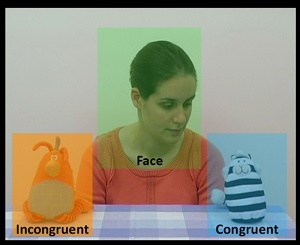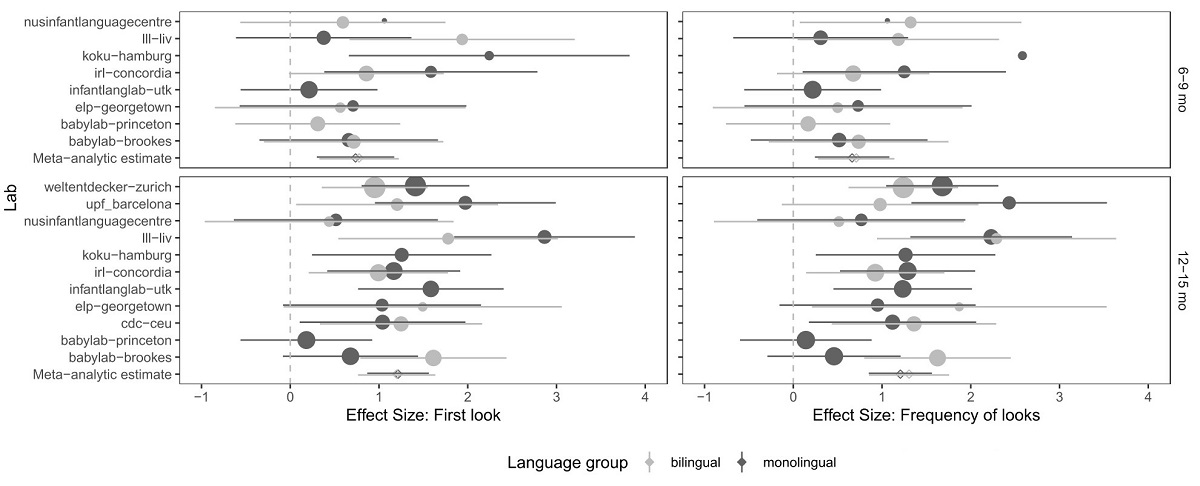
Project Overview
- Status: COMPLETE
- 11 participating labs collected data in 8 countries
- 322 infants tested
- 27 authors on Infancy publication
In this project we investigated the development of gaze following in monolingual and bilingual infants. Sensitivity to cues such as eye gaze might be particularly important for bilingual infants, as they encounter less consistency between words and objects than monolinguals, and do not always have access to the same word learning heuristics (e.g., mutual exclusivity).
 To test the hypothesis that bilingual experience would lead to a more pronounced ability to follow another’s gaze, we tested a total of 93 6–9 month-old and 229 12–15 month-old monolingual and bilingual infants (from 11 labs in 8 countries) in a gaze-following paradigm developed by Senju and Csibra (2008). Monolingual and bilingual infants showed similar gaze-following abilities, and both groups showed age-related improvements in speed, accuracy, frequency and duration of fixations.
To test the hypothesis that bilingual experience would lead to a more pronounced ability to follow another’s gaze, we tested a total of 93 6–9 month-old and 229 12–15 month-old monolingual and bilingual infants (from 11 labs in 8 countries) in a gaze-following paradigm developed by Senju and Csibra (2008). Monolingual and bilingual infants showed similar gaze-following abilities, and both groups showed age-related improvements in speed, accuracy, frequency and duration of fixations.

Unexpectedly, bilinguals tended to make more frequent fixations to onscreen objects, whether or not they were cued by the actor.

Our findings suggest that gaze sensitivity is a fundamental aspect of development that is robust to variation in language exposure.
Links
- Materials, Protocols, and Documentation: MB1G-OSF.
- Data and code: MB1G-GitHub.
- News: MB1G-news.
Project Lead
- Krista Byers-Heinlein, Concordia University, Canada [email]
MB1G Contributors
NOTE: Default table ordering is by contributor’s first name. You can filter, group, and/or sort entries by any field.
Publication
Byers-Heinlein, K., Tsui, R. K., van Renswoude, D., Black, A. K., Barr, R., Brown, A., Colomer, M., Durrant, S., Gampe, A., Gonzalez-Gomez, N., Hay, J. F., Hernik, M., Jartó, M., Kovács, Á. M., Laoun-Rubenstein, A., Lew-Williams, C., Liszkowski, U., Liu, L., Noble, C., … Singh, L. (2021). The development of gaze following in monolingual and bilingual infants: A multi-laboratory study. Infancy, 26(1), 4–38. https://doi.org/10.1111/infa.12360 [PsyArXiv Preprint]